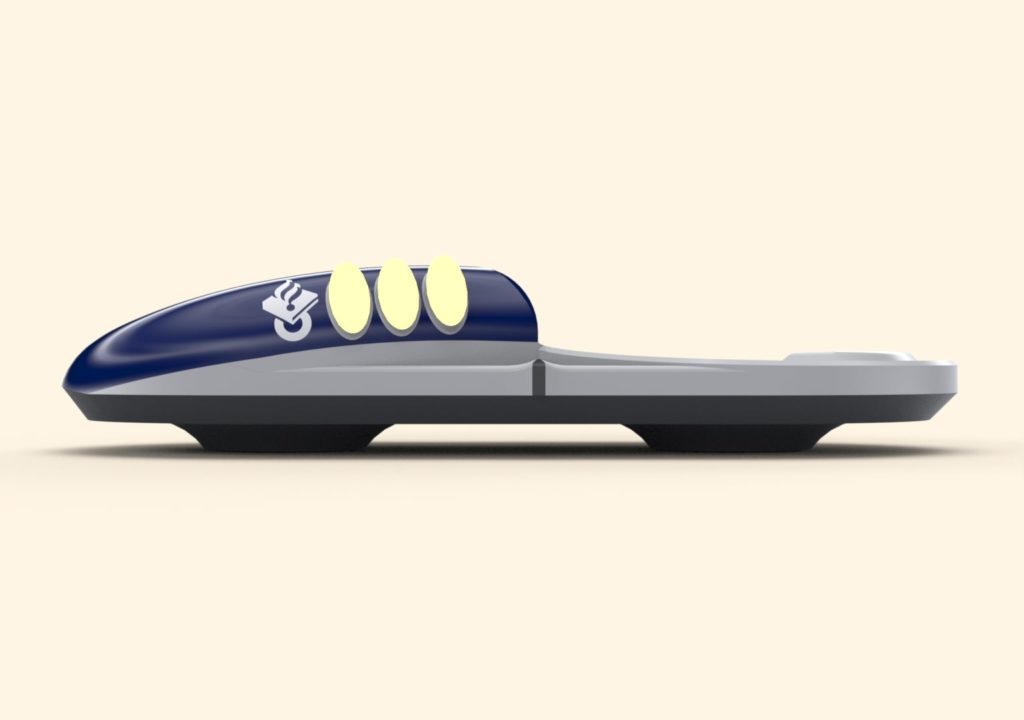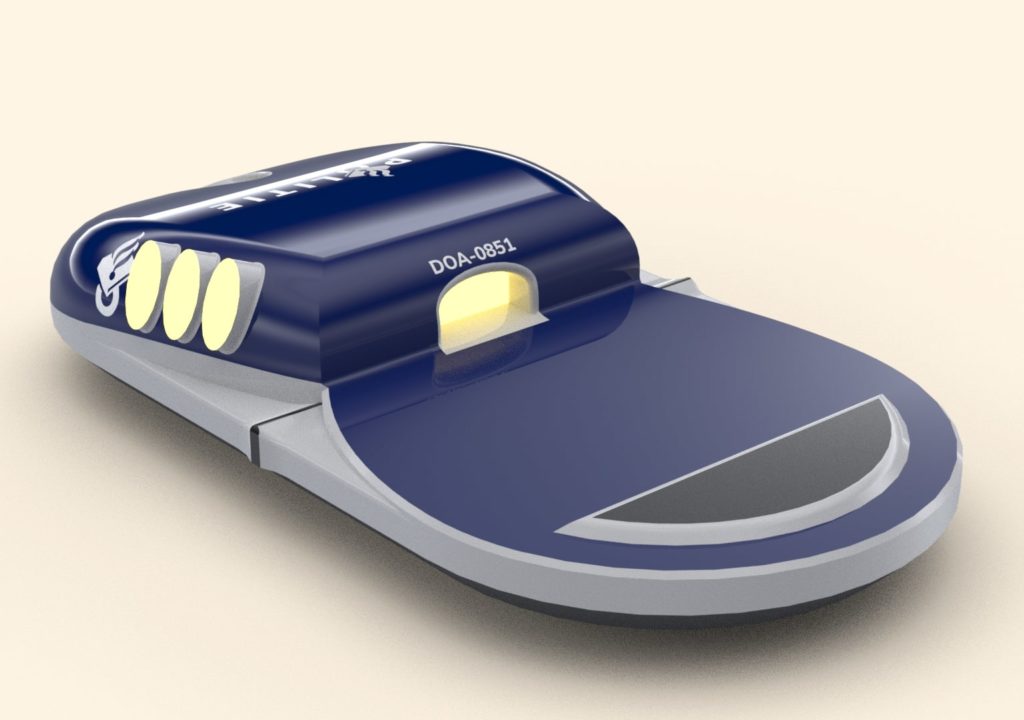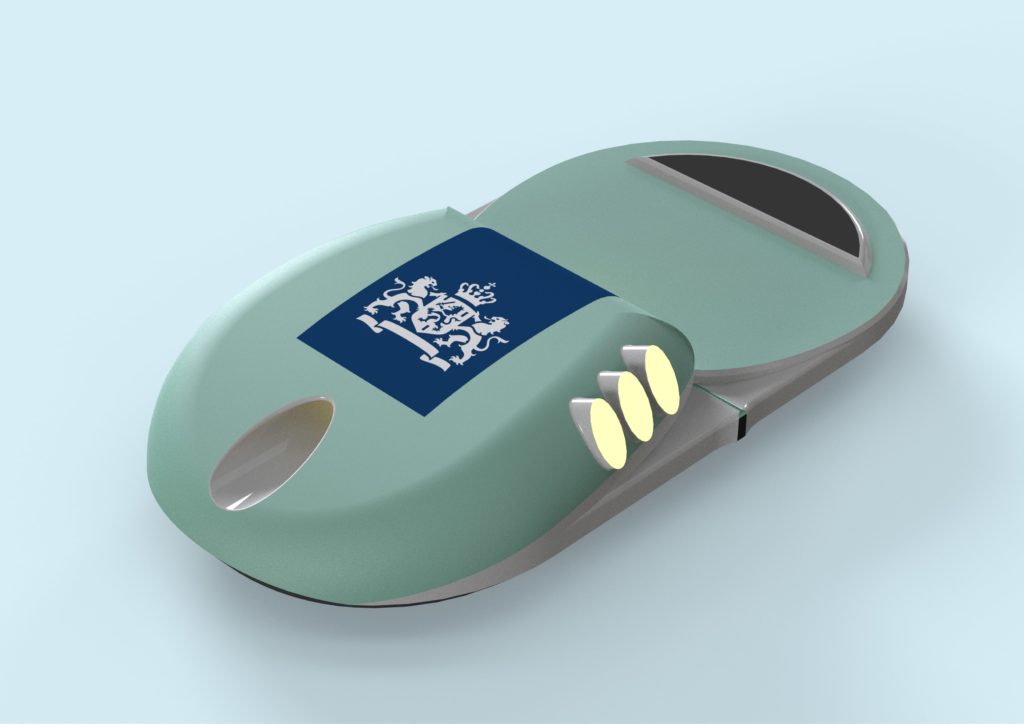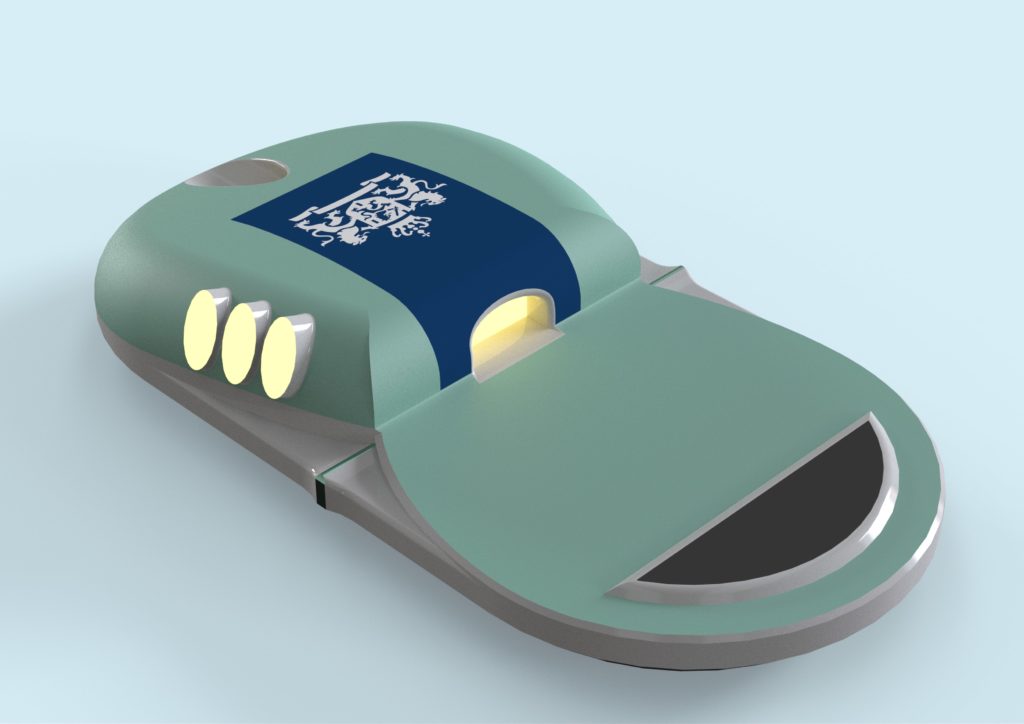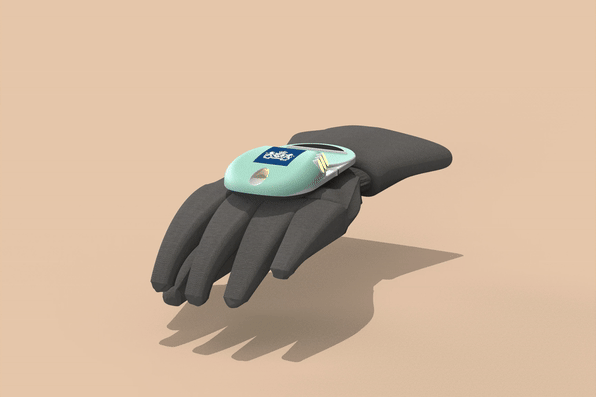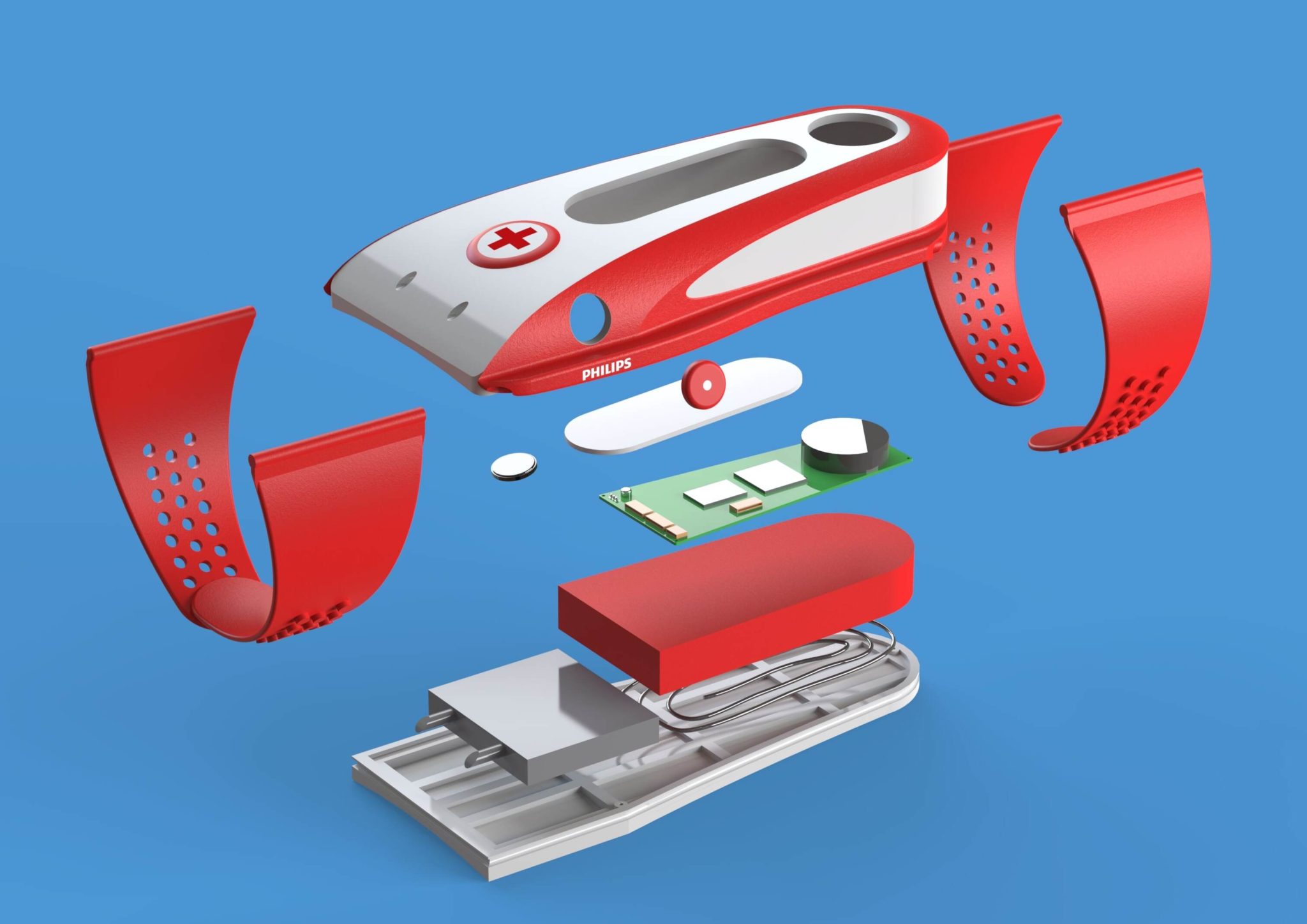
Wearable devices
Wearable devices
Within the public safety and health sector, we have crafted two innovative concepts for wearable smart devices designed to support first responders in their daily operations. These products harness the power of Intel’s neuromorphic technology, translating molecules into tangible substances—resembling the mechanism of smelling.
The initial concept targets locations like festivals or events where individuals might come into contact with unknown substances. Deployed strategically near these areas, first responders equipped with our device can swiftly identify the substance a distressed individual may have encountered. This rapid identification is critical, significantly improving the timeliness of assistance and care provided to the individual.
Constructed from easily detachable, recyclable components made from sustainable materials, the product ensures straightforward repairs if necessary. Additionally, the device detects smells at the front and features a top-mounted screen displaying pertinent information analyzed by the neuromorphic chip. This data can be temporarily stored for later use, facilitating its incorporation into essential reports and documentation.
If the substance is still accessible, it can be placed on the circular platform atop the device, optimizing the efficiency of analysis. Additionally, a side-mounted button allows users to signal their location to colleagues when necessary, enhancing communication and coordination during operations.
Within the public safety and health sector, we have crafted two innovative concepts for wearable smart devices designed to support first responders in their daily operations. These products harness the power of Intel’s neuromorphic technology, translating molecules into tangible substances—resembling the mechanism of smelling.
The initial concept targets locations like festivals or events where individuals might come into contact with unknown substances. Deployed strategically near these areas, first responders equipped with our device can swiftly identify the substance a distressed individual may have encountered. This rapid identification is critical, significantly improving the timeliness of assistance and care provided to the individual.
Constructed from easily detachable, recyclable components made from sustainable materials, the product ensures straightforward repairs if necessary. Additionally, the device detects smells at the front and features a top-mounted screen displaying pertinent information analyzed by the neuromorphic chip. This data can be temporarily stored for later use, facilitating its incorporation into essential reports and documentation.
If the substance is still accessible, it can be placed on the circular platform atop the device, optimizing the efficiency of analysis. Additionally, a side-mounted button allows users to signal their location to colleagues when necessary, enhancing communication and coordination during operations.
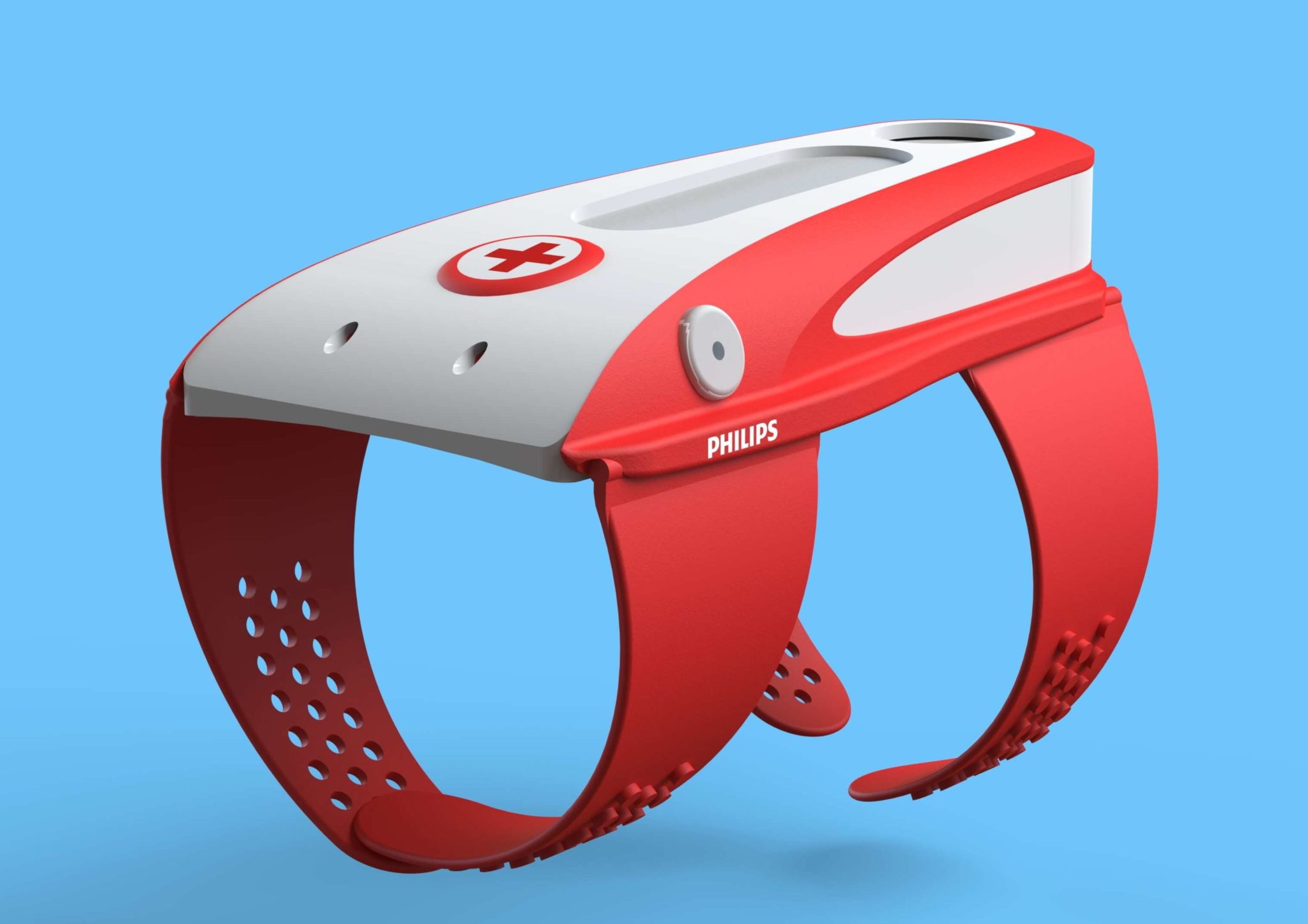
Similar to the initial concept, our second device is tailored for utilization by police officers and customs investigation services. While the design closely resembles the first device, the context of its use differs significantly. In both scenarios, the primary goal is to detect unknown or illegal substances, but here, the users are unaware of the substance’s storage location and actively seek to locate it. To communicate proximity to their target, a range meter with lights indicating the user’s closeness to the target is installed on the device’s side.
In addition to the screen for displaying necessary information, users have the capability to save specific molecular combinations. This is achieved by allowing the neuromorphic chip to detect and store reference substances on the platform part of the device, providing a valuable tool for ongoing investigations.
Similar to the initial concept, our second device is tailored for utilization by police officers and customs investigation services. While the design closely resembles the first device, the context of its use differs significantly. In both scenarios, the primary goal is to detect unknown or illegal substances, but here, the users are unaware of the substance’s storage location and actively seek to locate it. To communicate proximity to their target, a range meter with lights indicating the user’s closeness to the target is installed on the device’s side.
In addition to the screen for displaying necessary information, users have the capability to save specific molecular combinations. This is achieved by allowing the neuromorphic chip to detect and store reference substances on the platform part of the device, providing a valuable tool for ongoing investigations.

